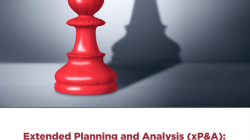It is very important to have well-established mechanisms for planning and budget control. So, managers can quickly correct the unit's
This paper covers the findings of our sixth annual FP&A Trends Survey, where we share the trends and challenges facing

Driver-based planning is a key topic for any FP&A team today. But what is not always clear is just how

Best practices from mature technology businesses have stable recurring Rolling Forecasts based on momentum, executive buy-in and a solid understanding

Strategy execution means core competencies support a realistic strategy and that the plan can be achieved, on time, on budget
xP&A is more than an attempt to ‘fix’ the planning process. It is a complete transformation of the FP&A function
Pagination
Subscribe to
FP&A Trends Digest

We will regularly update you on the latest trends and developments in FP&A. Take the opportunity to have articles written by finance thought leaders delivered directly to your inbox; watch compelling webinars; connect with like-minded professionals; and become a part of our global community.








